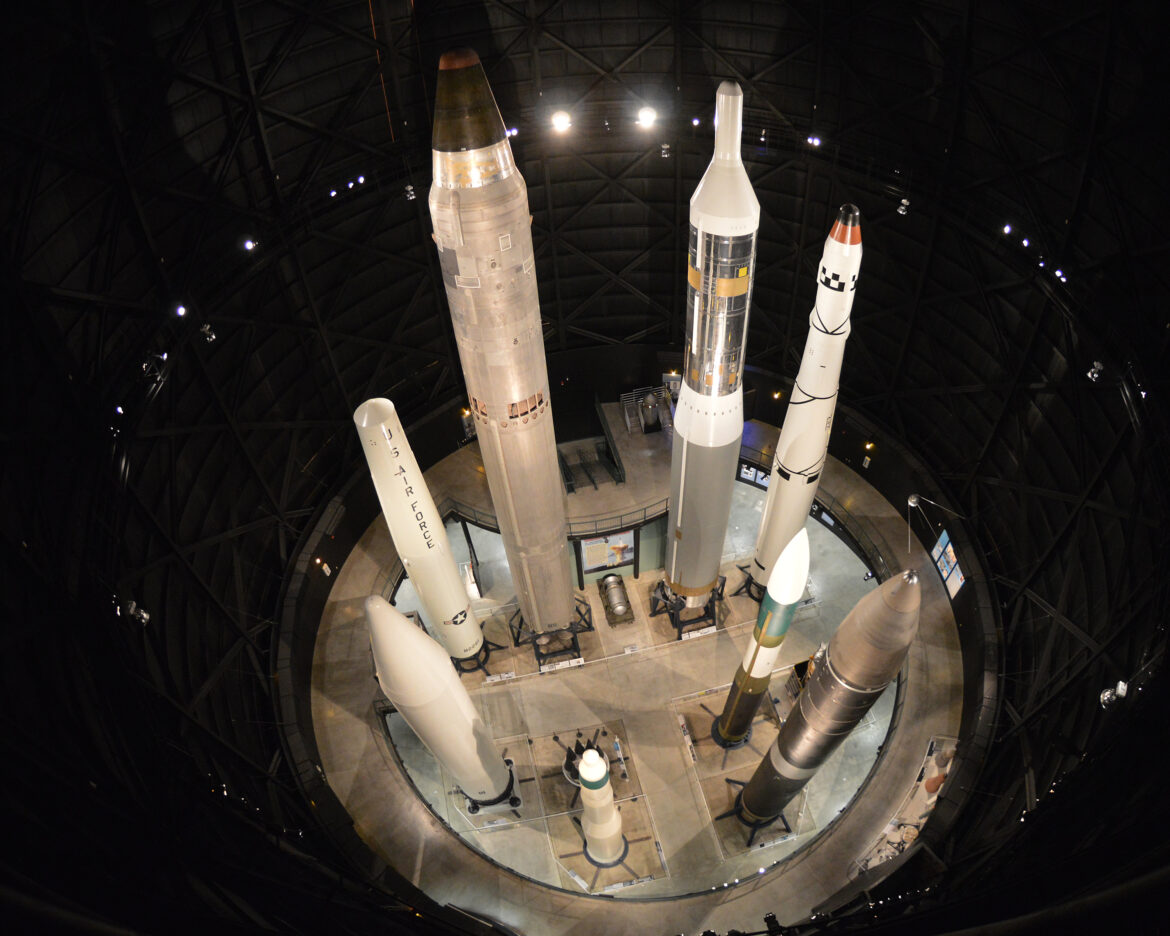In the intricate realm of global politics, the weight of nuclear weapons casts a long and formidable shadow. Their mere existence isn’t just a testament to technological might and unprecedented destruction but a testament to a world held in tenuous balance. This balance, marked less by mutual trust and more by the fear of assured mutual destruction, is the crux of nuclear deterrence. A concept which, rather paradoxically, suggests that the way to prevent war is to prepare for it with weapons of unparalleled devastation.
Understanding this concept begins by drawing parallels to our everyday lives, our domestic society. You put people in jail not only to punish them, but to deter others from behaving in such ways. On the grand stage of international relations, the cataclysmic consequences of nuclear war deter nations from stepping over certain lines. Deterrence is based on assumptions and the capacity to communicate, and even with leaders whose moral compasses are considered unconventional or extreme, rationality still rules the field of political studies and most behaviour is based on maximization of benefits and utility. But is such a balance stable? Is it rational?
The so-called balance of terror that nuclear deterrence brings about isn’t just founded on rationality but thrives on it. For there is no victory in a nuclear conflict; only vast landscapes of ruin and a populace decimated. No spoils of war, just haunting remnants of civilization’s past. For instance, imagine two nations in an arena, each pointing a gun at the other. The dynamics of nuclear deterrence can be analyzed through the lens of game theory, where the moves and countermoves of the involved parties resemble a high-stakes game where each player understands that initiating an attack would lead to mutual devastation. Therefore, it doesn’t matter who strikes first; if one hits, the other hits back, and destruction is guaranteed. We can take the Cold War’s example, where the two superpowers, armed to the teeth, refrained from direct confrontation because they both recognized a fundamental truth: in a nuclear war, there are no winners, and it’s this balance of terror that paradoxically ensures peace. If victory becomes impossible, then aggression becomes irrational. Moreover, there is a mutual understanding in the lack of basis to use nuclear weapons. If used on a territory you want to occupy, all that is meant to be possessed will be destroyed.
On the subject of immediate decisions in the nuclear age, there’s a particularly tangible symbol of the immense responsibility vested in the hands of the US President: the “Nuclear Football.” This term doesn’t refer to a game, but to a black leather briefcase that accompanies the President everywhere. The contents of this briefcase are shrouded in secrecy, but it’s understood to contain the communication tools, authentication codes, and a detailed playbook of response options in the event of a nuclear crisis. Contrary to popular myth, it doesn’t house a “big red button” for launching missiles. Instead, it facilitates the President’s ability to command and control the nuclear arsenal swiftly, ensuring an immediate response capability. This physical manifestation of nuclear responsibility further emphasizes the gravity and immediacy of the nuclear era.
History offers poignant reminders of nuclear ramifications. Hiroshima and Nagasaki aren’t mere entries in history textbooks but stand as stark monoliths of the horrors of nuclear warfare. The annihilation of these cities and their people in 1945 completely transformed global military thinking and strategy. The haunting imagery of those moments, forever etched in our collective memory, serves as a deterrent in itself, a vivid testament to the path we must never tread again. While some might point to this catastrophe as a counterargument, it’s essential to understand the context. These tragic events occurred at a unique moment in history, the end of World War II, when the full trembling of nuclear weapons was yet to be globally recognized and no other nation had the means to retaliate proportionally. Since this haunting statement, the use of such weapons has not been repeated, not due to lack of conflicts, but because of the inherent understanding of their consequences.
Over the decades, the widespread aversion to nuclear conflict has crystallized into a concept known as the “nuclear taboo.” This term, first coined by political scientist Nina Tannenwald in her 1999 article, reflects a global consensus that has evolved both morally and politically. It signifies that the use of nuclear weapons is universally condemned and actively avoided, a sentiment reinforced in various international treaties and diplomatic discussions. This deeply ingrained reluctance to resort to nuclear warfare is further underpinned by a series of global nuclear agreements and a range of United Nations resolutions aimed at preventing the proliferation and use of nuclear arms. Key treaties such as the Treaty on the Non-Proliferation of Nuclear Weapons (NPT), the Comprehensive Nuclear-Test-Ban Treaty (CBTB), and the Treaty on the Prohibition of Nuclear Weapons (TPNW) exemplify international efforts to formalize the aversion to nuclear conflict. Additionally, UN resolutions consistently advocate for nuclear disarmament and underscore the commitment of member states to seek peace and security in a world without nuclear weapons. The ramifications aren’t just confined to human and environmental costs but extend to severe economic repercussions. And yet, the irony remains. The very weapons that nations strive to stockpile are tremendously burdensome to maintain. Consider the US, which over the 2022-2023 allocated approximately $756 billion to its nuclear forces. This substantial expenditure encompasses various aspects ranging from development and modernization to maintenance and operational costs. And this figure represents just a single year’s budget, not accounting for the cumulative expense over decades. The economic implications of nurturing these arsenals are indeed profound. From their development and testing to their storage and potential decommissioning, the environmental, financial, and societal implications are profound. This financial strain, juxtaposed against the economic catastrophe of a post-nuclear conflict world, further bolsters the deterrent aspect of nuclear weapons.
Historical confrontations, such as the 1999 Kargil War between the nuclear-armed rivals India and Pakistan, stand as significant markers in the discourse on nuclear deterrence. However, a particularly instructive example is the Cuban Missile Crisis of 1962. This tense 13-day standoff saw the United States and the Soviet Union teetering on the brink of nuclear war. The crisis began when the US discovered Soviet ballistic missiles in Cuba, just 90 miles from its coast. It was a chess game of diplomacy and military posturing, with both superpowers understanding that a misstep could plunge the world into nuclear apocalypse. Despite the immense pressure and the heightened stakes, the two nations managed to negotiate a peaceful resolution, ironically due to the very presence of their nuclear arsenals acting as deterrents. This event underscores the power and effectiveness of nuclear deterrence: even at the height of Cold War animosities, the catastrophic implications of nuclear conflict steered the adversaries towards diplomacy.
A stunning example of mutual deterrence can also be found in Russia’s possession of a unique and rather chilling piece of Cold War-era technology called “Perimeter,” often referred to as the “Dead Hand.” This failsafe was engineered with a grim scenario in mind: even if a nuclear strike were to incapacitate Russia’s entire command structure, the Perimeter system would autonomously launch a counter strike against the aggressor, ensuring mutual destruction. This automated system further emphasizes the doctrine, ensuring that even in the face of total annihilation, a nation could still deal a retaliatory blow, further bolstering the deterrent power of nuclear arsenals.
In conclusion, the dual nature of nuclear weapons becomes evident. While nuclear weapons are instruments of immense destruction, they paradoxically also safeguard a fragile peace through the understanding that their use would guarantee mutual annihilation. This paradox, that humanity has engineered the means for its own potential extinction while simultaneously establishing a deterrent to war, was poignantly summarized by J. Robert Oppenheimer, one of the key architects of the atomic bomb. Reflecting on the destructive capability of the bomb after its first test, he quoted the Bhagavad Gita: “Now I am become Death, the destroyer of worlds.” The somber reflection of Oppenheimer, immortalized in film and literature, serves as a testament to the dual nature of nuclear weapons and the responsibility that comes with wielding such power. The true power of nuclear deterrence lies not in its capacity to wage war but in rendering such a war an utterly irrational choice.
Edited by Mahnoor Zaman

Born in Montreal, but having lived my entire life in Lebanon, I’ve developed a deep-rooted connection to my home country and a profound passion for Middle Eastern politics. My experiences have inspired me to pursue a double major in Political Science and Economics at McGill University, where I strive to deepen my understanding of the complexities of regional and global issues.

